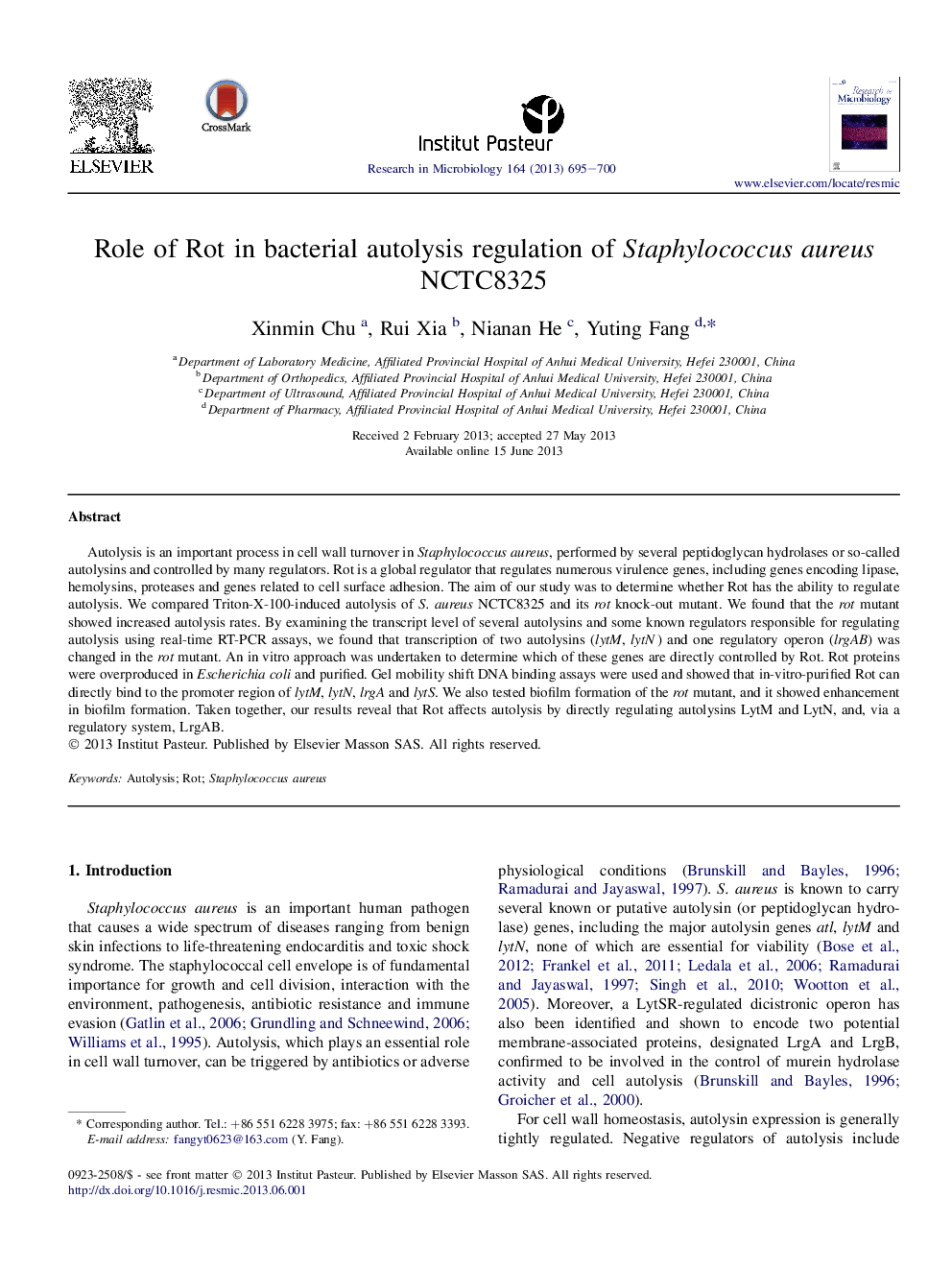| کد مقاله | کد نشریه | سال انتشار | مقاله انگلیسی | نسخه تمام متن |
|---|---|---|---|---|
| 4358691 | 1300451 | 2013 | 6 صفحه PDF | دانلود رایگان |

Autolysis is an important process in cell wall turnover in Staphylococcus aureus, performed by several peptidoglycan hydrolases or so-called autolysins and controlled by many regulators. Rot is a global regulator that regulates numerous virulence genes, including genes encoding lipase, hemolysins, proteases and genes related to cell surface adhesion. The aim of our study was to determine whether Rot has the ability to regulate autolysis. We compared Triton-X-100-induced autolysis of S. aureus NCTC8325 and its rot knock-out mutant. We found that the rot mutant showed increased autolysis rates. By examining the transcript level of several autolysins and some known regulators responsible for regulating autolysis using real-time RT-PCR assays, we found that transcription of two autolysins (lytM, lytN) and one regulatory operon (lrgAB) was changed in the rot mutant. An in vitro approach was undertaken to determine which of these genes are directly controlled by Rot. Rot proteins were overproduced in Escherichia coli and purified. Gel mobility shift DNA binding assays were used and showed that in-vitro-purified Rot can directly bind to the promoter region of lytM, lytN, lrgA and lytS. We also tested biofilm formation of the rot mutant, and it showed enhancement in biofilm formation. Taken together, our results reveal that Rot affects autolysis by directly regulating autolysins LytM and LytN, and, via a regulatory system, LrgAB.
Journal: Research in Microbiology - Volume 164, Issue 7, September 2013, Pages 695–700